As I understand it R lacks a methods to buffer polygons in a spatially exclusive way that preserves the topology of adjacent polygons. So I'm experimenting with an approach that generates voronoi polygons of the original polygon vertices. Results seem quite promising except for apparent errors in the voronoi generation.
Fairly old school R, so it's possible a tidier alternative may work better. This reproducible example uses US/Canada, but note the problem is one of mathematical geometry so marine boundaries are not relevant:
require(rworldmap)
require(rgeos)
require(dismo)
require(purrr)
require(dplyr)
par(mai = rep(0,4))
p = rworldmap::countriesCoarse[,'ADMIN']
p = p[p$ADMIN %in% c('United States of America', 'Canada'),]
p$ADMIN = as.character(p$ADMIN)
p = rgeos::gBuffer(p, byid=T, width = 0) # precaution to ensure no badly-formed polygon nonsense
# Not critical to the problem, but consider we have points we want to assign to enclosing or nearest polygon
set.seed(42)
pts = data.frame(x = runif(1000, min = p@bbox[1,1], max = p@bbox[1,2]),
y = runif(1000, min = p@bbox[2,1], max = p@bbox[2,2]))
coordinates(pts) = pts
pts@proj4string = p@proj4string
# point in polygon classification.
pts$admin = sp::over(pts, p)$ADMIN
pts$admin = replace(pts$admin, is.na(pts$admin), 'unclass')
plot(p)
plot(pts, pch=16, cex=.4, col = c('red','grey','blue')[factor(pts$admin)], add=T)
Let's say we want to bin the grey points to nearest polygon. I think the most elegant approach would be to create a new expanded set of polygons. This avoids lots of n-squared nearest neighbour calculations. Next we try a voronoi tesselation of the original polygon vertices:
vertices1 = map_df(p@polygons, ~ map2_df(.x@Polygons, rep(.x@ID, length(.x@Polygons)),
~ as.data.frame(..1@coords) %>% `names<-`(c('x','y')) %>% mutate(id = ..2)))
print(head(vertices1))
#> x y id
#> 1 -56.13404 50.68701 Canada
#> 2 -56.79588 49.81231 Canada
#> 3 -56.14311 50.15012 Canada
#> 4 -55.47149 49.93582 Canada
#> 5 -55.82240 49.58713 Canada
#> 6 -54.93514 49.31301 Canada
coordinates(vertices1) = vertices1[,1:2]
# voronois
vor1 = dismo::voronoi(vertices1)
# visualise
plot(p)
plot(vertices1, add=T, pch=16, cex=.5, col = c('red','blue')[factor(vertices1$id)])
plot(vor1, add=T, border='#00000010', col = c('#FF000040','#0000FF40')[factor(vor1$id)])
Lots of errors in here. Maybe due to different polygons sharing some vertices. Let's try small negative buffer to help the algorithm:
p_buff2 = rgeos::gBuffer(p, byid=T, width = -.00002) # order of 1 metre
vertices2 = map_df(p_buff2@polygons, ~ map2_df(.x@Polygons, rep(.x@ID, length(.x@Polygons)),
~ as.data.frame(..1@coords) %>% `names<-`(c('x','y')) %>% mutate(id = ..2)))
coordinates(vertices2) = vertices2[,1:2]
vor2 = dismo::voronoi(vertices2)
plot(p_buff2)
plot(vertices2, add=T, pch=16, cex=.4, col = c('red','blue')[factor(vertices2$id)])
plot(vor2, add=T, border='#00000010', col = c('#FF000040','#0000FF40')[factor(vor2$id)])
Some improvements - almost validating the approach I think. But again we still have some errors, e.g. blue chunk of British Colombia and a thin pink strip of easter border area in Alaska. Lastly I plot with a bigger buffer to help show what is happening with individual vertices (click for bigger resolution):
p_buff3 = rgeos::gBuffer(p, byid=T, width = -.5, ) # order of 30kms I think
vertices3 = map_df(p_buff3@polygons, ~ map2_df(.x@Polygons, rep(.x@ID, length(.x@Polygons)),
~ as.data.frame(..1@coords) %>% `names<-`(c('x','y')) %>% mutate(id = ..2)))
coordinates(vertices3) = vertices3[,1:2]
vor3 = dismo::voronoi(vertices3)
plot(p_buff3)
plot(vertices3, add=T, pch=16, cex=.4, col = c('red','blue')[factor(vertices3$id)])
plot(vor3, add=T, border='#00000010', col = c('#FF000040','#0000FF40')[factor(vor3$id)])
Is anyone able to shed light on the problem, or possible suggest an alternative voronoi method that works? I've tried ggvoronoi but struggled to get that working. Any assistance appreciated.





